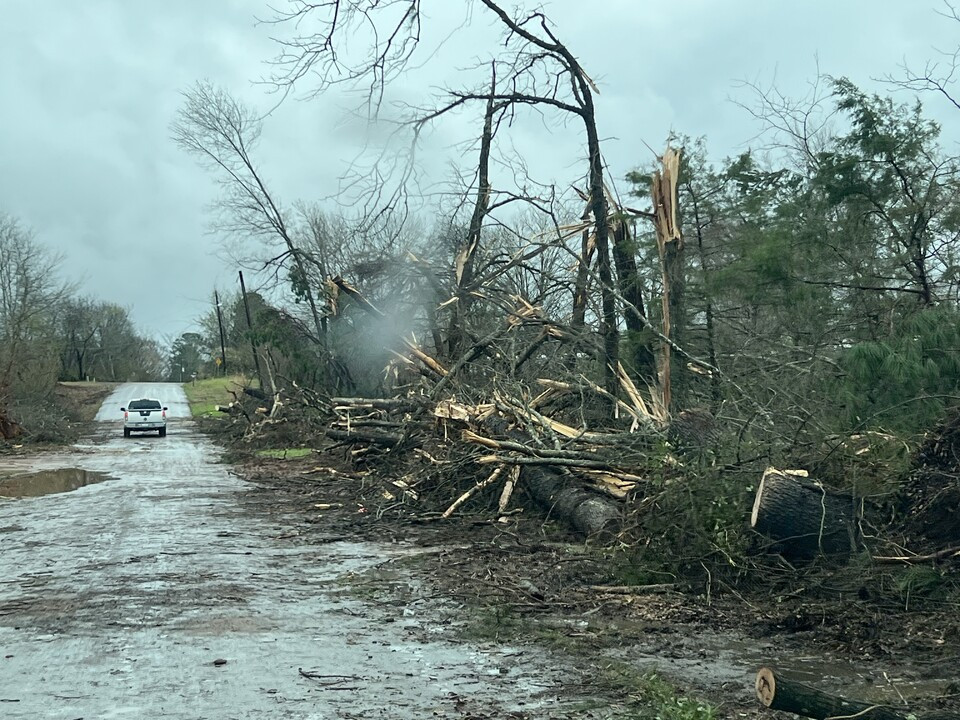Traveling is often a time for relaxation and adventure, but it can quickly turn stressful if you find yourself caught in a natural disaster. Whether it's a hurricane, earthquake, flood, or wildfire, knowing how to respond can make a significant difference in ensuring your safety and the safety of those with you. At Get Drivers Ed, we emphasize the importance of being prepared for any situation, including emergencies. In this blog, we will discuss essential steps to take if you're caught in a disaster while traveling, with a focus on staying safe and informed.
Before You Travel
1. Research Your Destination: Before embarking on your trip, research the area you will be visiting. Understand the potential natural disasters that could occur and familiarize yourself with local emergency procedures and evacuation routes. Knowing what to expect can help you plan accordingly.
2. Pack an Emergency Kit: Always travel with a basic emergency kit that includes essentials such as a first-aid kit, flashlight, batteries, bottled water, non-perishable food, a multi-tool, and a portable phone charger. Having these items readily available can be invaluable in an emergency.
3. Stay Informed: Sign up for travel alerts from reliable sources such as the National Weather Service or local authorities at your destination. These alerts can provide real-time updates on weather conditions and potential hazards.
4. Share Your Itinerary: Let family or friends know your travel plans, including your itinerary and accommodation details. This information can be crucial if you need to be located in an emergency.
During a Disaster
1. Stay Calm and Assess the Situation: Panic can cloud your judgment and make it difficult to make rational decisions. Stay calm and assess the situation. Determine the nature of the disaster and the immediate risks to your safety.
2. Follow Local Instructions: Pay attention to instructions from local authorities, emergency services, and hotel staff. If an evacuation is ordered, follow the designated routes and leave the area as quickly and safely as possible. Do not ignore official warnings.
3. Seek Shelter: Depending on the type of disaster, finding appropriate shelter is crucial. For instance, during a hurricane or tornado, seek shelter in a sturdy building away from windows. In the event of an earthquake, drop to the ground, take cover under sturdy furniture, and hold on until the shaking stops.
4. Stay Connected: Use your mobile phone or other communication devices to stay informed and connected with loved ones. Keep your phone charged and conserve battery power by limiting non-essential usage. Social media and messaging apps can also be useful for checking in with family and friends.
5. Avoid Hazardous Areas: Steer clear of areas that pose a significant risk, such as flood zones, damaged buildings, and wildfire paths. If driving, avoid roads that are prone to flooding or have been damaged. Your safety is the top priority.
After the Disaster
1. Check for Injuries
Assess yourself and those around you for injuries. Provide first aid if necessary and seek medical attention for serious injuries. Remember to stay calm and help others to the best of your ability.
2. Report Your Location
Let your family, friends, and local authorities know your location and condition. If phone lines are down, try using text messages or social media to communicate.
3. Follow Safety Precautions
Continue to follow safety guidelines from local authorities. Avoid entering damaged buildings and be cautious of hazards such as downed power lines, gas leaks, and unstable structures.
4. Document the Event
If it is safe to do so, document the damage and your surroundings with photos and notes. This information can be useful for insurance claims and providing accurate information to authorities.
5. Stay Informed
Keep updated with the latest news and instructions from local authorities. The situation can change rapidly, and staying informed will help you make the best decisions for your safety.
How Get Drivers Ed Can Help
At Get Drivers Ed, we are committed to teaching drivers not only how to operate a vehicle safely but also how to respond effectively in emergency situations. Our comprehensive drivers ed programs include lessons on defensive driving, hazard recognition, and emergency preparedness. By enrolling in our course, you can gain valuable skills that will help you stay safe on the road and during unexpected events.
Our drivers ed course covers:
Defensive Driving Techniques
Learn how to anticipate and react to potential hazards on the road. Defensive driving can help you avoid accidents and stay safe in emergency situations.
Emergency Preparedness
Understand how to prepare for and respond to various emergencies, both on and off the road. This includes knowing what to do in case of natural disasters while traveling.
Real-World Scenarios
Gain practical experience through simulations and real-world examples. This hands-on approach ensures that you are well-prepared to handle unexpected situations.
Conclusion: Be Prepared with Get Drivers Ed
Being caught in a disaster while traveling can be a daunting experience, but with the right preparation and knowledge, you can navigate the situation safely. At Get Drivers Ed, we believe that being a responsible driver includes being prepared for emergencies. Our comprehensive drivers ed program equips you with the skills and knowledge needed to stay safe in any situation.
Don't wait until an emergency strikes. Enroll in our drivers ed course today and take the first step towards becoming a safer, more prepared driver. Remember, a well-educated driver is a safe driver, and with Get Drivers Ed, you’re in good hands. Drive smart, drive safe, and be prepared with Get Drivers Ed.
By taking these steps before, during, and after a disaster, you can help ensure your safety and the safety of those around you. Whether you're at home or traveling, being prepared and knowing how to respond to emergencies is essential. At Get Drivers Ed, we are here to help you become a confident, informed, and responsible driver, ready to face any challenges that come your way.

